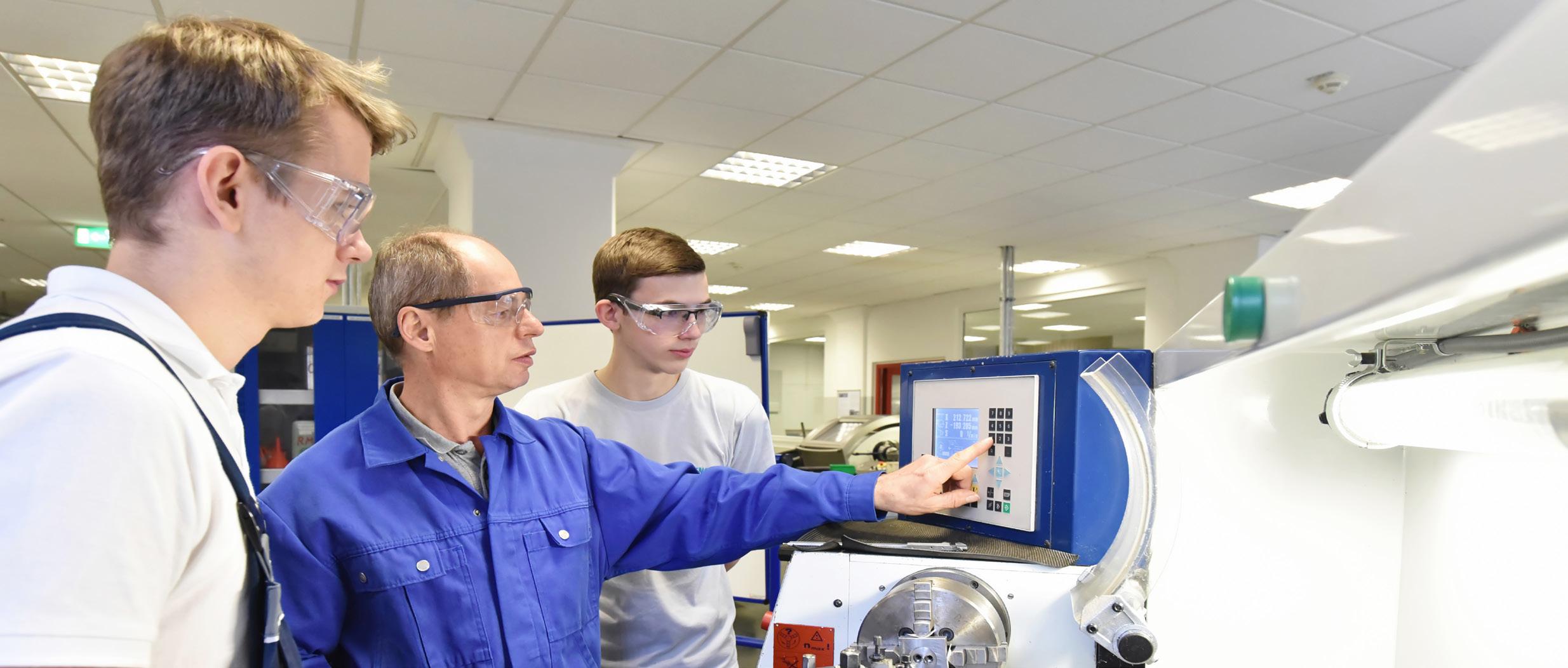OECD Economic Surveys Lithuania Executive Summary



October 2022
OCTOBER 2022
• The rebound has been strong but economic resilience will be tested
• Policy should help bolster resilience
• Structural reform will strengthen the economy
• Sharing the growth dividends
Key recommendations
Financial and fiscal policies
• Tighten fiscal policy at an appropriate pace to help mitigate inflationary pressures.
• Ensure that support is targeted at vulnerable households and firms affected by high energy prices.
• Tighten the macroprudential stance should housing market developments start posing a risk to financial stability.
• Ensure that the deficit returns to a sustainable level over the medium term, by following the fiscal rules and conducting further spending reviews.
• Consider establishing an automatic link between the retirement age and life expectancy beyond the year 2026.
• Assign more own-source revenues to local government.
Structural policies
• Subject all public enterprises, whether state- or municipally-owned, to the same legal, financial and regulatory framework as private firms.
• Consolidate the school network further.
• Ensure timely implementation of the new curricula for schools, including attainment targets for digital skills.
• Strengthen firm-based learning in the manufacturing and the service sectors.
• Engage with international firms from countries with an established apprenticeship system.
• Ensure that the attractiveness of firm- and school-based learning is balanced.
• Extend carbon pricing to all areas where it is not yet implemented, notably transport and agriculture.
• Increase public investment in targeted research and development and green infrastructure.
• Continue to improve the quality and transparency of the policymaking process.
Unleashing the potential of digitalisation
• Provide R&D support through a more balanced combination of tax-incentives and direct support to smaller innovative firms.
• Proceed with the implementation of the National Broadband Plan, ensuring universal access to high-speed broadband by 2027.
• Support the development of venture capital by prioritizing public support through privately-owned funds rather than direct engagement.
• Continue current efforts to develop a comprehensive network of advisory and mentoring services for SMEs.
• Introduce labour market outcome and international mobility indicators in university funding formulas.
• Provide additional funding to tertiary institutions for degree completions in disciplines that are important for the labour market, including digital transformation.
• Proceed with the development of a national lifelong learning platform that will serve as a “one-stop shop” for adult education, complementing it with intensified information campaigns and provision of career counselling.
The rebound has been strong but economic resilience will be tested
The recovery from the pandemic has been rapid. Strong exports and a resolute government support programme allowed GDP to reach the pre-pandemic level in early 2021. The war in Ukraine has begun to affect the economy.
Inflation is record-high. Lithuania is facing one of the highest inflation rates in the euro area, exceeding 22% in September, pushed up by the prices of energy and, to a lesser extent, food and housing (Figure 1). The strong impact of higher energy prices reflects high energy intensity of the economy and an excessive share of oil and gas in the energy mix. While nominal wages continue to climb fast, real wages have been on a downward trend since end 2021.
Figure 1. Inflation has reached new heights Harmonised index of consumer prices
Energy and trade expose Lithuania’s vulnerabilities. Russia’s share in Lithuanian oil and gas imports was 73% and 42% respectively in 2020. Lithuania stopped importing Russian energy in April-May 2022 but Russia remains one of Lithuania’s largest trading partners, potentially affected by the war and sanctions. In early April the government presented a fiscal package to support household incomes and increase energy independence.

Economic projections are subject to substantial uncertainty. GDP growth is projected to slow to 1.6% in 2022, hit by declining exports and increased uncertainty, and to 1.3% in 2023 (Table 1). Investment is set to gather pace, supported by an inflow of EUfunds. The continuing war in Ukraine and an abrupt contraction in energy supply could hurt the economy further.
Table 1. Growth is slowing
(Annual growth rates, unless specified)
GDP at market prices 0.0 6.0 1.6 1.3 Unemployment rate 8.5 7.1 5.8 6.5 Harmonised index of core inflation1 2.6 3.4 9.8 7.8
General government gross debt (% of GDP) 55.5 51.4 52.8 55.1
1. Excludes food, energy, alcohol and tobacco. Source: OECD Economic Outlook 111 database (updated).
Policy should help bolster resilience
Financial and fiscal policies have supported the economy through the pandemic and are supporting households and firms to cope with rising energy prices. Fiscal space needs to be rebuilt gradually, subject to targeted support to cushion the impact of the war, while preparing for the rising costs of ageing.
The financial system seems profitable, well capitalized and liquid. Ample liquidity support helped households and firms through the pandemic. Household credit continued to grow almost unabated, and corporate balance sheets look healthy. The central bank has started to tighten macroprudential policies somewhat in the face of signs of overheating in the housing market.
A revised draft budget plans to spend 1.4% of GDP in 2022 to help households and firms weather the energy crisis and 0.6% to help Ukrainian refugees. The fiscal stance was highly expansionary in 2020, contractionary in 2021 and is projected to be highly expansionary again in 2022. The government plans to return to the medium-term objective by 2024. Pandemic-related support, in particular the well-funded short-term work scheme, has been deployed and withdrawn timely.

Ageing costs are rising. Lithuania’s population is ageing fast (Figure 2). Emigration of the young and low immigration contribute to ageing pressures. Despite a built-in sustainability factor in the pension system, the government projects ageing costs to rise by over 2 percentage points of GDP by 2060. Establishing an automatic link between retirement age and life expectancy after 2026 could help maintain sustainability and adequacy of pensions.
Figure 2. The population is ageing fast Old-age dependency ratio projections
Source: United Nations, World Population Prospects 2019.
Public investment is expanding. European Union funding helps muster support for politically challenging reforms, especially in education and health care where reform effort has been shy so far. Consolidating the extensive school and hospital networks could help raise productivity and reduce spending pressures in the public sector.
Lithuania is highly centralised. Local tax and budget autonomy are low, with municipalities relying on budget transfers, discouraging local investment. The government plans to broaden the immovable property tax base and assign all tax revenues to the municipalities, and has started procedures to increase local capacity to borrow for investment. More own-source revenues could encourage investment, while local administrative capacity and coordination at the regional level need to improve further.
Tax incentives to foster innovation are numerous, but take-up is low. They seem to miss the trigger points of Lithuania’s catchingup economy involving many small and creditconstrained start-ups. Direct, non-tax support to firms is negligible. A more balanced combination of tax incentives and direct support would be more effective in supporting innovation.
Structural reform will strengthen the economy
Reforming public firms and upgrading the education system at all levels will boost productivity and employment. Strengthening support to research and development and modernising the public sector will help reap the benefits of digitalisation.

State-owned firms are active in many sectors, and the quality of their governance can be improved further. Municipal enterprises in particular lack a transparent regulatory and governance framework, potentially distorting competition with private providers. The government continues to adapt its ownership strategy by converting several public entities into (state-owned) limited companies. Subjecting all public entities to the same legal, financial and regulatory possibilities and constraints as private firms is essential to level the playing field and ultimately raise productivity.
The quality of compulsory education is poor. PISA scores are below the OECD average (Figure 3). Reasons for underperformance include an excessive school network, low teacher competencies and an inadequate curriculum. In 2021 the government started a primary and lower secondary education reform, by developing a new teacher competency framework; increasing wages for head teachers; adapting the curriculum; and increasing minimum school and class size.
Figure 3. PISA scores are below average
Average
Reading
Source: OECD, PISA 2018 database.
Vocational education and training (VET) should play a greater role. Firm-based learning (apprenticeships) is very limited. The government has started to make the vocational path more attractive, by providing school boards with more power and making study programmes more flexible. Further expanding firm-based learning, in particular by better adapting programmes to firms’ needs, could also help improve VET’s labour market relevance.

Performance of tertiary education lags behind. Excellence of Lithuanian universities is below comparable countries, and the mismatch between study programmes and labour market needs is considerable. Students from a disadvantaged socio-economic background find it more difficult to enter university, partly because of a restrictive allocation of state-funded places. Reforms such as linking public funding to labour market performance or international student mobility could encourage universities to increase quality.
Digital technologies have advanced but uptake and use still lag behind. More effective support for business R&D and stronger research-business collaboration could boost private investment in innovation. Strengthening digital infrastructure, addressing the urban-rural “digital divide”, and improving access to finance for young firms could help enhance uptake and effective use of digital technologies, especially by smaller firms.
Figure 4. Digital integration lags behind
Source: European Commission, Digital Scoreboard.
A modernised public sector and strong skills are important drivers for digitalisation. There is much scope to digitalise the public sector, including through more e-government processes, consolidation of information resources and enhancing IT infrastructure. Better digital services and their accessibility for vulnerable groups would increase inclusiveness. More generally, shortages in ICT and ICT-related skills remain. Additional funding could be provided to tertiary institutions for degree completions in disciplines that are important for the digitalisation process. Strong and relevant digital skills are vital to share fairly the dividends of digital transformation.
Sharing the growth dividends
Reducing poverty and regional disparities, improving trust and institutional quality, and curbing carbon emissions will help make the Lithuanian economy more inclusive and sustainable.

Although declining, poverty remains a challenge. The share of the population at-riskof poverty remains the second highest among European OECD countries. The tax-and-transfer system does not reduce inequality and poverty much. However, over the past two years, and against the backdrop of the pandemic, the government has considerably increased social spending, notably on pensions and targeted social benefits, and raised the non-taxable income threshold for low-income earners.
Regional differences in income, productivity and employment exceed the OECD average. Internal migration towards larger agglomerations has accelerated in recent years, while differences in productivity between core and peripheral regions are trending down. The government is addressing regional disparities by empowering regional institutions and by improving policy coherence and coordination at the regional level.
Trust and institutional quality are lagging. The share of Lithuanian citizens trusting their government is below OECD average, and the responsiveness of political institutions to citizens’ demands and satisfaction with the political process is comparatively weak. Corruption is above the OECD average but the gap is narrowing ostensibly. The government is addressing rampant legal inflation, improving the design of laws and regulations and fostering evidence-based policymaking, to help increase institutional quality and trust in government.
Lithuania’s aim to reduce carbon emissions by 30% in 2030 is ambitious. Per-capita carbon emissions are below the OECD average but continue to rise. Transport and agriculture are important emission sources. Carbon is taxed above the OECD average, yet persisting fuel subsidies undermine effective carbon pricing. Environmental spending is low. Broadening carbon pricing and investing in low-carbon technology, especially in transport and agriculture, will help achieve climate goals. The government is taking steps towards decarbonisation and higher energy security.
OECD Economic Surveys LITHUANIA
Lithuania’s economy exited the covid-19-crisis successfully and was growing fast until early 2022, buoyed by rising exports and rapid integration into global value chains. However, with Russia’s aggression of Ukraine continuing and its consequences spreading, the outlook has darkened. Growth has slowed, and inflation has risen to some of the highest levels in the euro area, driven by high energy and food prices. The country cut all energy ties with Russia, relying on imports from other countries instead. The government supports the many Ukrainian refugees and helps households and firms weather the energy crisis. Structural unemployment and skills mismatch remain high, while poverty declines only slowly. Further reform could help maintain economic resilience and cope with rising uncertainty. Reducing the scope of state-owned firms and improving their governance would help raise productivity. Linking education to labour market needs more closely would help improve employment and skills. Greater uptake of digital technologies by firms, along with a modernised public sector and strong skills will also help lift trend growth. Reaching the climate objective of net zero emissions by 2050 will require bold policy action, both on the tax and the spending side.
SPECIAL FEATURE: REAPING THE BENEFITS OF DIGITALISATION
Photo credits:
Cover © MNStudio/Shutterstock.com.
Page 3: @ Roman Babakin/Shutterstock.com
Page 4: @ Vincent Koen
Page 5: @ Gorodenkoff/ Shutterstock.com
Page 6: @ industryviews/Shutterstock.com
Page 7: @ artem evdokimov/Shutterstock.com
